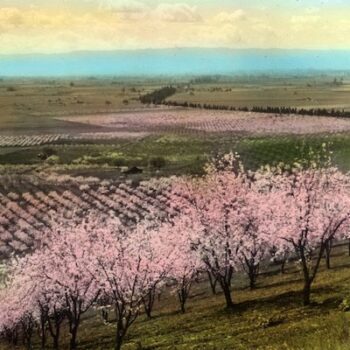
The gaping disparity between the Santa Clara Valley I know and the object of popular fantasy came into relief the moment I saw the billboard. On Sunset Boulevard, not far from my Los Angeles home, it was atrocious: a gray-scale photo of five young men, four of them white, dressed in dark sweaters above the tagline “Where Everyone Wants to Be an Icon.” It referred to a cable show’s titular setting, spelled out in red block letters. I blinked in alarm. Silicon Valley?
I’m from its capital, the million-strong San Jose. Where was the Latino demographic, constituting our greatest plurality? The country’s largest Sikh Gurdwara, and the world’s biggest Little Saigon? Where was the sprawling homeless encampment? Where the intractable street gangs? Bathhouses, biker bars, coffee cake klatches of old folks at Hobee’s? Where were the women? And who wears a turtleneck in the Mediterranean climate? I may not go back much, but enough to know that this “Everyone” is reductive to an egregious extreme, even of the zeroes-and-ones world.
Then a friend sent me an op-ed from a respectable publication, by a colleague of hers in academia. It was a jeremiad against the Valley and praise for the sitcom, assessing the latter to capture the place’s character of megalomaniacal constriction to a mainframe. The article’s author furthered his fish-in-a-barrel shooting spree with anecdotes from hearsay and a novel—mentioning only offhandedly that he lives there (other critics’ prurient infatuation seems to beam from traditional attention center New York). Ironically, it was as though he’d gathered his impressions of the Valley from his tablet instead of exploring for himself. As the early coders said, “Garbage in, garbage out.”
A quarter million of the area’s total four million work in tech—one out of sixteen people. That’s more than the proportion of Angelenos in entertainment, less than that of Las Vegas residents in hospitality. I come from one of the Valley’s techiest corners. At my west San Jose public schools growing up, I stood out for my whiteness. My classmates were predominately Asian, and in particular Taiwanese (American-born Chinese, or ABC). Most of their parents were computer engineers and support staff of the weekday, middle-class kind, filling the ranks of Oracle, National Semi, Intel, Hewlett-Packard, and so on. My own father worked as a lawyer with some of these companies.
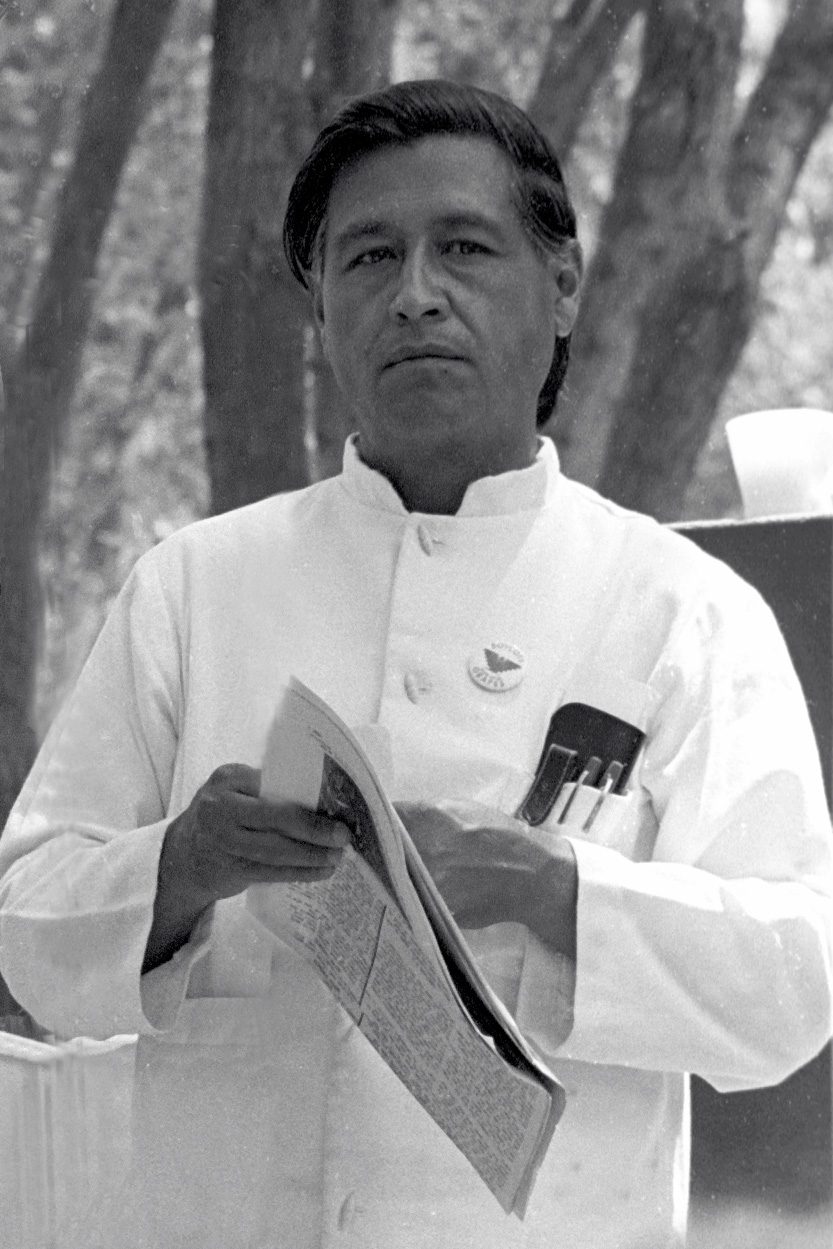 We had The Tech Museum, but also the Biblioteca Latinoamericana, hillside wineries, Lick Observatory, Julia Morgan architectural gems, the Municipal Rose Garden, Japantown’s Buddhist temples, and all manner of “culture,” contrary to what San Francisco’s elitists liked to suppose (was it envy of our sunshine?). One civic to-do of my youth was over an expensive new statue on Cesar Chavez Plaza, a bronze model of Aztec feathered serpent-god Quetzal Coatl—the coiled shape of which unfortunately resembled something a little less lofty. Regardless, the gesture was an important recognition of the place’s early history. Once native Ohlone territory, Spanish outpost San Jose became California’s first city, and then Gold Rush land. It fostered socialist activity, weathered the sins of Japanese internment and the Bracero program, and produced Chavez himself. In 1975 it became the United States’s first major municipality to elect a woman mayor. For much of my life it’s been the country’s tenth biggest city, close to the size of San Francisco and Oakland combined.
We had The Tech Museum, but also the Biblioteca Latinoamericana, hillside wineries, Lick Observatory, Julia Morgan architectural gems, the Municipal Rose Garden, Japantown’s Buddhist temples, and all manner of “culture,” contrary to what San Francisco’s elitists liked to suppose (was it envy of our sunshine?). One civic to-do of my youth was over an expensive new statue on Cesar Chavez Plaza, a bronze model of Aztec feathered serpent-god Quetzal Coatl—the coiled shape of which unfortunately resembled something a little less lofty. Regardless, the gesture was an important recognition of the place’s early history. Once native Ohlone territory, Spanish outpost San Jose became California’s first city, and then Gold Rush land. It fostered socialist activity, weathered the sins of Japanese internment and the Bracero program, and produced Chavez himself. In 1975 it became the United States’s first major municipality to elect a woman mayor. For much of my life it’s been the country’s tenth biggest city, close to the size of San Francisco and Oakland combined.
My engineer grandparents lived in the Valley all of my mother’s life; my grandpa lives in the same house today. He was a conservation-minded materials scientist who left a big firm and founded his own company—an innovator, but not stereotypically high-tech. In the ‘60s, when my own childhood home was built nearby, the area was still covered in orchards, and known as “Valley of the Heart’s Delight” for its bountiful yield of plums, walnuts, cherries and more. When I was a girl, a number of these fields remained, untended, and made ideal places to climb trees, gorge on apricots, and hide among clusters of blushing blossoms. Most of those places are built out now, but significant arboreal stretches stand through the Valley, many officially protected and more natural than those planted rows.
Very early in the 20th century, the US Department of Defense began conducting radio experiments out of the Valley, followed by aeronautic projects in the ‘30s and ‘40s. On the civilian side, Stanford helped sponsor the research of alumni start-ups like Hewlett-Packard. In the 1950s the seminal Shockley lab used its expertise in transistors to create the semiconductor, after which some of its staff set up the storied Fairchild. Fledgling NASA turned to Fairchild for its first spaceships’ chips, and the company went on to make integrated circuits. Its leaders decamped to form Intel and invent the microprocessor late in the ‘60s. 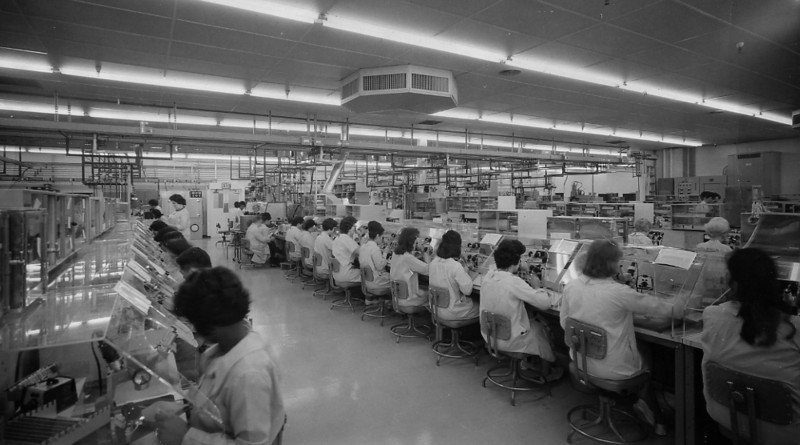 The same class of workers who’d sewn garments and edited film used gloves and microscopes to print those delicate pieces with their tiny drops of silicon: women were essential to high-tech development.
The same class of workers who’d sewn garments and edited film used gloves and microscopes to print those delicate pieces with their tiny drops of silicon: women were essential to high-tech development.
In the 1970s, a local club of engineers gave birth to the first Apple, ushering in new venture capital, while Stanford hosted efforts in interfaces and networking. With increasing affordability and the spread of user-friendly software in the ‘80s, personal computers began to dot the landscape. When I was in kindergarten, my school’s small bank of Macintoshes had a sign above its box of diskettes reading, “To err is human. To really mess things up, you need a computer.” My mother taught basic programming language until my father, hailing from the East Bay, got promoted. Being primarily responsible for two small children, with a third to come, made it unrealistic for her to keep up with quickening changes in computing. Her mother had taken a similar exit.
In elementary school, one of my friends had a Nintendo console, a couple more had Gameboys, and there was the requisite mall arcade. But contrary to the dystopian imaginings preceding us, much of what we did for fun was what kids all over have done for generations: spy on adults, conduct squirt-gun wars, and imitate local sports heroes (in our case the Sharks, in bouts of street hockey). By high school in the late ‘90s our parents had cell phones; most of our families had dial-up Internet. Ours hooked up to a PC tower we called HAL. MySpace and Napster existed, but no one I knew really used them.
The Valley had more concrete disruptions to deal with. The 1989 earthquake jarred a fault line running from San Jose up the peninsula past my dad’s Palo Alto office and into San Francisco. My grandma, an avid naturalist, got the whole family t-shirts with a tectonic map of our home turf, reading “San Andreas… It’s our fault!” We’d always had seismic drills at school (that quake came later in the day) but now volunteers sent home “space blankets” to face the next Big One. Not long after, I remember vividly the construction of Highway 85.  It ran straight through the Valley and cut between home and school for me, so that the overpass entered my twice-daily route. The afternoon the grand road was set to open, we neighborhood kids all stopped our bikes and waited for the cars to zoom beneath us. Within days the constant rush became a non-event, unworthy of even a spit-bomb.
It ran straight through the Valley and cut between home and school for me, so that the overpass entered my twice-daily route. The afternoon the grand road was set to open, we neighborhood kids all stopped our bikes and waited for the cars to zoom beneath us. Within days the constant rush became a non-event, unworthy of even a spit-bomb.
Not to say that all was jake in tech-land for a kid like me—one who read precociously, wrote copiously, and talked to plants for her science fair project. My schools were much more attuned to sciences than humanities. Originally that focus seemed linked to parental values rather than school system priorities: my classmates’ families, particularly immigrant ones, pushed their kids into areas like their own, considering them most economically viable and creating demand for those subjects. At the primary level, many of my peers dutifully marched off to Kumon math centers to start early on an advanced track. But by the time I graduated high school, California’s meager education funding focused specifically on those electives in the so-called STEM fields. Decision-makers all down the line didn’t want to shoulder blame for our future inability to compete in the “globalized” economy. First went the arts, then shop, and then sports (though our competitive marching band and badminton teams always came out on top). With the direst moments of testing past, spilling bongwater on my graphing calculator put a merciful end to my own reluctant scientific career.
Tech money was most visible in the sprawling new foothill homes feeding other schools of the west Valley (the only area private schools were religious). Some homes belonged to executives and entrepreneurs, others just more reckless spenders. Perversely, parental largesse meant that those schools could fund the “extras” my school had cut. The dot-com crash of 2000 hit my senior year, and though my classmates’ parents didn’t work at start-ups, their companies had gained value with the stock market bubble. When it popped they were forced to rapidly downsize, learning first-hand the perils of mere speculation.
I thought of moving east to find others who shared my passions, and got excited about Columbia. But at the school’s admit weekend I experienced the same feeling of alienation I’d had touring other Northeast colleges, and after the trip, I chose Stanford. Despite its tight ties with the tech world, its students and faculty were diverse enough in interests not to recreate the hegemony of my high school. Even if it took a minute to find, my own critically-minded faction was present, and belonged with an honorable local tradition of artists and activists. 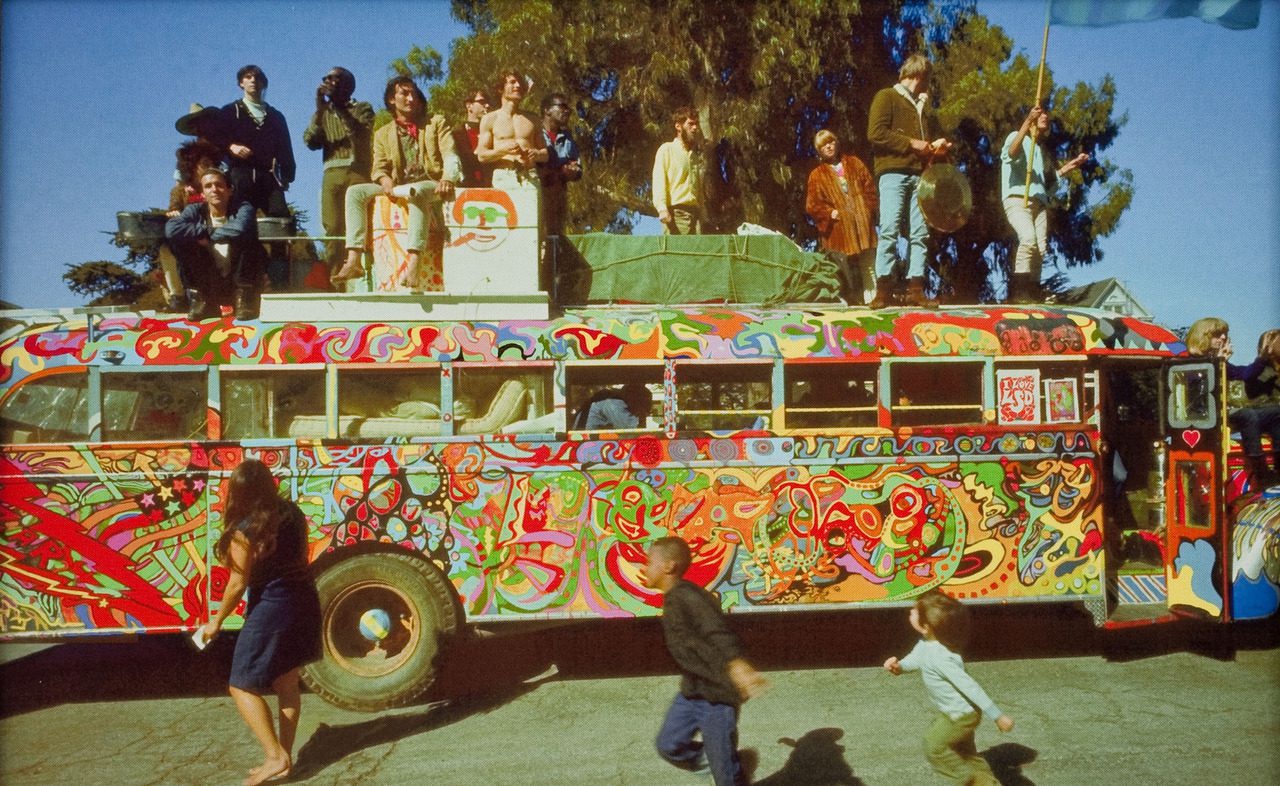 After all, Palo Alto was where the Grateful Dead formed and encountered Ken Kesey—spawning the famous “Acid Tests” and everything that followed.
After all, Palo Alto was where the Grateful Dead formed and encountered Ken Kesey—spawning the famous “Acid Tests” and everything that followed.
Reading dispatches from “the Farm” now, I wonder: Was this always how it looked from outside? President Hennessy dedicates his publicity mostly to STEM. Of course, he was a computer engineer himself, our first president to be not a humanist or natural scientist, but… well, an unnatural scientist (and an enemy to campus organizers of my vintage). Even then, Stanford’s medical research, atom-smashing and perennial solar car project draw much of the university community’s focus—all outside the scope of digital clichés. The Humanities Fund continually solicits donations via mailers and phone calls, but it’s no surprise that our graduates don’t have as much to give.
Because the Kumon set was right: All kinds of deregulation, notably Clinton-era telecom and trade acts, paved the way for monopolies and outsourcing. Paired with the gradual automation of the former middle-income workforce—in manufacturing, service and retail—and the exploitation of intellectual property with externalized costs of the so-called “cloud,” the result has been a loss of quality jobs for people with different skill sets and levels. The effects have manifest in related migration patterns around the country, and beyond. The phenomenon is remarkable in the geographic area surrounding the tech industry because, unlike many, these employers are adding jobs more quickly than the housing market can absorb them. But if the experts are right, “cognitive computing” may well obviate these positions too.
While I think wistfully of the places abroad that treat these trends with more legal and social suspicion, Americans have always prized maximum choice and anything that facilitates its exercise. My own frustrations are more with these national preferences—of cheap convenience over economic rights—than with any particular business culture. As strange and sad as I find the common romance with the Internet, it helps to remember that a majority of the world’s population doesn’t have cell phones or Web access (or for that matter, toilets). With that perspective, those obsessing over a gaggle of geeks gone wild seem as ostrich-headed as said geeks. While the Valley in general is a privileged place, most of its residents still share first and foremost the universal imperative of providing for their families, whether sending their parents remissions or forcing their children through calculus.
In the way that my teenage ABC friends only saw themselves as American after spending time in China, it became clear when I did eventually move to the East Coast just how much my environs had shaped me. In particular, the New England penchant for decorum rubbed against my chronically insubordinate mindset (“upsetting the apple cart,” as some would have it, “thinking outside the box” to others, but “shaking things up” regardless). My habits came from a nearly intrinsic set of values prizing authenticity, creativity, and dedication to a search for solutions. I discovered myself unexpectedly,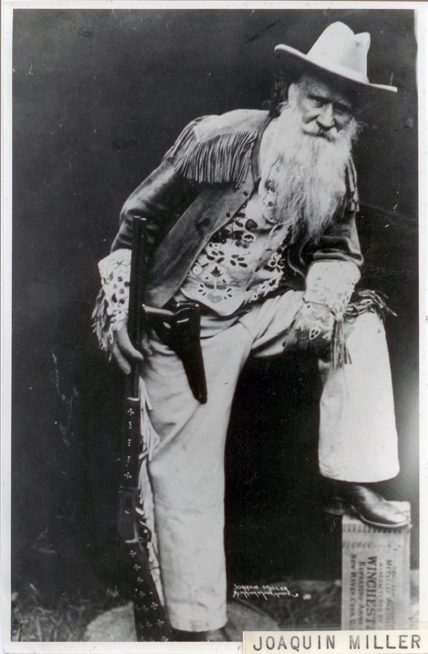 unwillingly—almost umbilically—bonded to the socks-and-sandals crowd of my formative years. And far from being an aspiring robber baron, I was a labor organizer.
unwillingly—almost umbilically—bonded to the socks-and-sandals crowd of my formative years. And far from being an aspiring robber baron, I was a labor organizer.
Even at its worst, the regional frontier mentality belongs to an undeniable tradition. One young startup chief’s disreputable behavior has adequately disconcerted me to look into whether our college alumni association can expel a member. And yet, I think of how my middle school was named after local anti-hero Joaquin Miller, a turn of the century writer, horse thief, and by all accounts unscrupulous figure. It’s easy to see him as an appealingly colorful character now, but Ambrose Bierce and other Bay Area peers of Miller’s time seemed mostly to regard him as a self-aggrandizing cowboy hack. Whatever the guise of the day, the scoundrels will always be with us. Personally, I have no doubt that those reveling in venture-fund excess for more than a brief time will end up like their spiritual forebears from Nashville to Wall Street: sued by their families, choking on their own vomit, and mauled by exotic pets. Frankly, who cares?
Tellingly, Silicon Valley the show is made by the same man who brought us that other classic of pithy social analysis, Beavis and Butthead; his resume is a roll call of sophomoric white guy favorites. He seems to have spent a total of ten weeks in the Valley, in the ‘80s, having grown up in New Mexico and since lived in Texas. It’s hard not to wonder if he, Mike Judge, has keyed in on a Valley element with which he may personally identify. We could probably say that everyone in the Valley wants to be an “icon” of the app-launch kind in the way that each DC denizen covets the Oval Office. On its own, the Valley is another place, anchoring another sector, hosting all manner of life. It does us all a disservice to separate the Valley’s current industrial action from that of its natural environment, human history and broader political context. To refuse its complexity is to neglect its most valuable insights: from the seekers, the laborers and the diligent inventors who have all called the basin their home.
I’m my family’s sole aberrant Luddite, with little in the way of electronic gadgets or online presence. No one else, including my grandpa, shared my unease about my brother Skyping into my grandma’s funeral last fall when he couldn’t be there in person. They thought it wouldn’t have perturbed her at all, and they were almost certainly right. We buried her in a pioneer cemetery where I used to leave poppies as a child, close to John Brown’s widow, between redwoods that have handily outlived them both. But you won’t see the forest on your flat-screen, so go and visit the Valley. Just let it be itself.
***
Image credits: Feature image, image 2, image 3, image 4, image 5, image 6.




